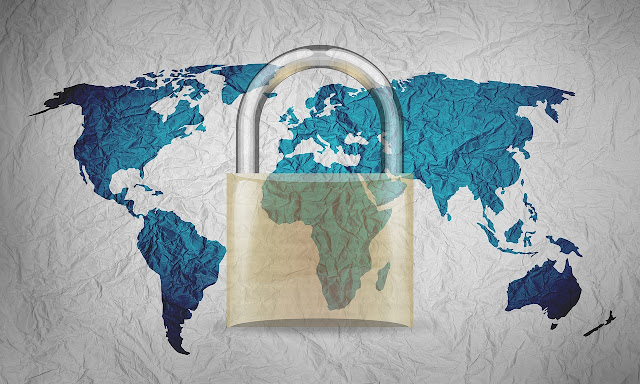MISINFORMATION AND DISINFORMATION
Disinformation and misinformation are two related concepts that refer to false or misleading information.
WHAT IS DISINFORMATION AND MISINFORMATION?
Disinformation refers to false or misleading information that is intentionally spread with the goal of deceiving people or manipulating their beliefs or opinions. It is often spread by individuals or organizations with specific agendas, such as governments, political campaigns, or special interest groups. Disinformation can be distributed through a variety of channels, including social media, news media, and propaganda.
Misinformation, on the other hand, refers to false or misleading information that is spread without the intention of deceiving people or manipulating their beliefs or opinions. Misinformation can be shared unintentionally through inaccurate reporting or through the sharing of rumors or urban legends. It can also be spread intentionally by people who are not aware that the information they are sharing is false or misleading.
Both disinformation and misinformation can have harmful effects on individuals, communities, and society as a whole. They can lead to misunderstandings, reinforce biases, and create divisions. It is important to be critical of the information we consume and to verify the accuracy of information before sharing it with others.
TYPES OF MISINFORMATION AND DISINFORMATION
There are many types of disinformation and misinformation, but some common examples include:
- Conspiracy theories: These are false narratives that suggest that an event or situation is the result of a secret, usually malevolent, group or organization.
- Hoaxes: These are false or misleading stories or events that are created to deceive people, often for entertainment or amusement.
- Propaganda: This is the dissemination of information, often biased or misleading, to promote a particular political ideology, cause, or agenda.
- Fake news: This is false or misleading information presented as if it were legitimate news.
- Satire and parody: These are humorous or exaggerated versions of real news stories or events that are intended to entertain rather than deceive, but can sometimes be mistaken for real news.
- Misleading statistics: This is the manipulation of data or statistics to misrepresent the true nature of a situation or event.
- Rumors and gossip: These are unverified pieces of information that are circulated without evidence, often through social media or other informal channels.
It is important to be critical of all information we encounter and to verify the accuracy of information before sharing it with others.
HOW TO PROTECT AGAINST MISINFORMATION AND DISINFORMATION?
Here are some tips to protect against disinformation and misinformation:
- Check the source: Verify the source of the information before sharing it, or even believing it! Read reputable news sources that have a track record of accuracy.
- Fact-check: Verify the truthfulness of the information by cross-checking it against other sources or fact-checking websites. You should always verify content from at least two sources.
- Be skeptical: Be critical of information that confirms your existing beliefs or biases. Be open to considering different perspectives and information that challenges your assumptions. It is well known that algorithms suggest content based on what you have interacted with previously, so there is a good chance you are constantly exposed to content that supports your beliefs rather than challenging them.
- Check the date: Make sure that the information is up-to-date and relevant to the current situation. In our fast-paced world, everything has a much shorter expiration date. So make sure that the content still applies, otherwise it can be misleading.
- Watch for emotional language: Be cautious of information that uses strong emotional language or relies heavily on emotional appeals. This is done to manipulate you by making you attached to the content and to provoke certain feelings. One of the best examples for this is charity scams or love scams.
- Don't share blindly: Before sharing information, verify its accuracy and credibility. Be responsible and avoid sharing information that you have not verified.
- Educate yourself: Learn more about how disinformation and misinformation work, and how to recognize and combat them. There are many resources available online and in your community to help you stay informed.
EXAMPLES OF DISINFORMATION AND MISINFORMATION IN SOCIETY
Disinformation and misinformation have become weapons of choice for countries like Russia, China, and North Korea, who have been waging information warfare campaigns for years. But it's not just these countries that are playing dirty. Recent reports suggest that even Israel has a company that boasts that it has meddled in more than "30 elections" by spreading false information. Journalist found out that it was run by Tal Hanan, a former Israel special forces operative.
The Internet Research Agency is a Russian organization that has been linked to the spreading of disinformation and propaganda online. It is believed to be a state-sponsored organization that operates under the Russian government's direction. The organization has been accused of interfering in the 2016 US Presidential election by creating fake social media accounts and spreading false information to influence public opinion. It is funded by notorious warlord, Yevgeny Prighozin, who is also behind mercenary group, Wagner. He also allegedly set up Cyber Front Z, that we explored in this post.
The US Department of Justice has indicted several individuals associated with the Internet Research Agency on charges related to election interference. The Internet Research Agency has also been linked to other disinformation campaigns, including efforts to sow discord and mistrust in other countries.
China has been known to use disinformation campaigns for various purposes, including suppressing dissidence within its borders, promoting its own interests on the global stage, and influencing public opinion in other countries. For example, during the 2019 Hong Kong protests, Chinese state media outlets spread false information about the protesters. During the COVID-19 pandemic, Chinese state media outlets promoted conspiracy theories about the virus.
By being cautious and critical of the information we consume, we can protect ourselves from the harmful effects of disinformation and misinformation.
References
- Putinin trollit, author Jessikka Aro, published 2019
- UNHCR - Using Social Media in Community Based Protection, A Guide
- France 24 - Israeli firm 'boasted' of meddling in more than 30 elections worldwide
- Arizona State College - Seven ways to protect yourself against misinformation
- BBC - The disinformation tactics used by China
- The New York Times - Facebook and Twitter Say China Is Spreading Disinformation in Hong Kong
- Spyscape - Inside Russia’s Notorious ‘Internet Research Agency’ Troll Farm
- RAND Institute - Chinese Disinformation Efforts on Social Media
- CEU Democratic Institute - China: A War with Disinformation
- UW Bothell and Cascada College - News: Fake News, Misinformation & Disinformation





Comments
Post a Comment